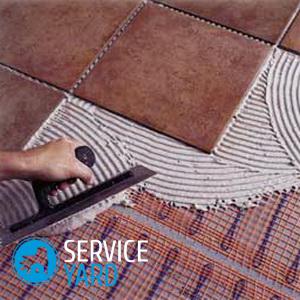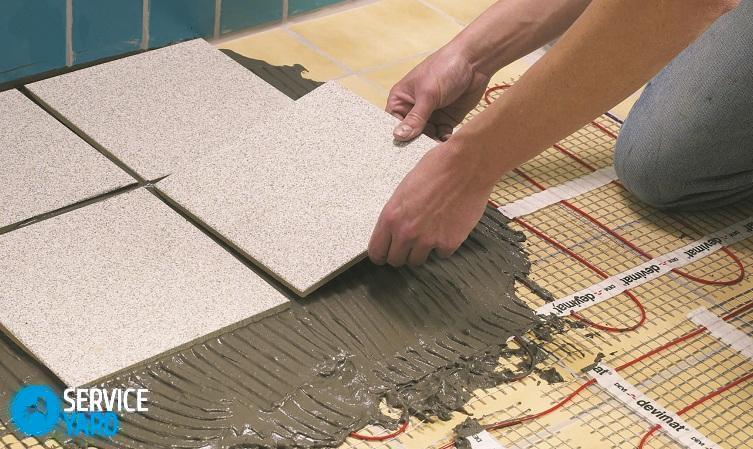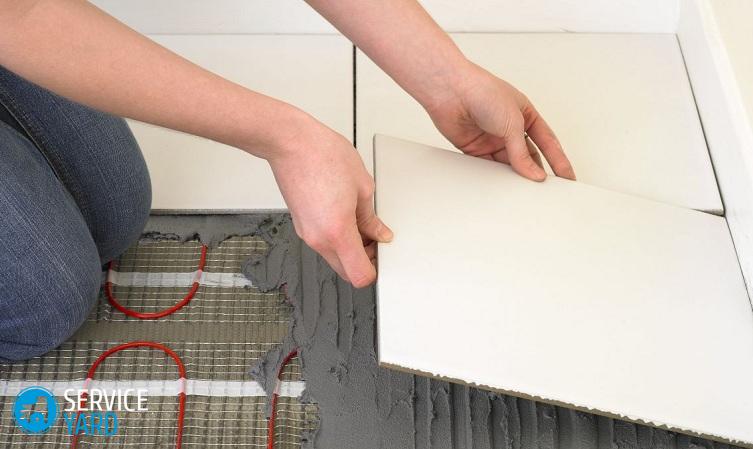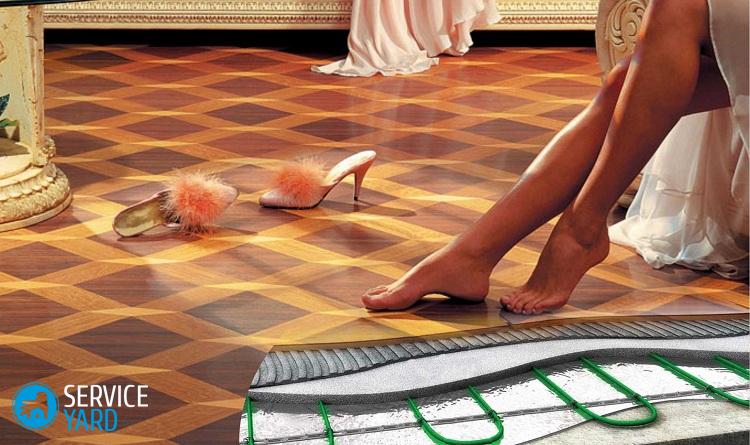Which floor is better - water or electric in a private house?

The underfloor heating system for heating in residential buildings is becoming more and more popular. Manufacturers produce several different options for such a heating system for houses and apartments. In this article, we will talk about which warm floor is better - water or electric, in a private house and apartment. The quality result will depend on how competent your choice will be, and your comfort will depend on it. If all the investment of effort and money does not justify itself, disappointment will be noticeable, and yet we strive for the opposite result. Therefore, we will go through all the important points regarding the choice of the best warm floor for the house.
to contents ↑Types and Features
As mentioned earlier, warm floors are divided into a couple of categories: water and electric. In turn, electric heaters of this type also have their division into classes:
- Cable.
- Film.
- Rod.
- Wire
As can be seen from the division, the choice is not from the simple ones, because each type of heater has its own advantages and disadvantages, and each of them has its own functioning features. You need to consider all the options before choosing the perfect warm floor. Water or electric - which is better depends on what the system is intended for and what capabilities, besides the main one, you want to get from it.
to contents ↑Electric
Nowadays, the market offers several options for such solutions for the home. They are installed in different ways, function and differ in price.
Common Pros
All electrical systems show a number of common benefits for this category. Among them stand out:
- Space saving. In small apartments, central heating occupies an already missing place. In the variant with electric underfloor heating, installation is done under the floor covering and does not occupy usable space.
- Durability and reliability. Such heating structures “live” for a very long time, half a century without repair - a rather long time.
- It does not depend on utilities.
Important! The heat from the system rises to the ceiling, thereby warming the air and saving the owner of the apartment from annoying drafts.
Cable option
The design is based on a cable that quickly heats up due to high resistance when an electric current passes through it. The system itself is built on several times insulated wires so that they allow you to use this type of heating even in conditions of high humidity.
An electric thermostat is used to connect to the mains. Its sensors regulate the heating system depending on the temperature in the room. This characteristic allows you to maintain optimal temperature in the house.
Important! The biggest plus, of course, is the cheapness of the material and low cost of installation.
As in any other system, there were some minuses:
- High power consumption when using.
- When installing, you need to make a screed - this makes the base thicker on which the floor covering will be laid.
- The presence of small electromagnetic radiation.
- It is not recommended to use in places near plumbing.
- Dries the air.
Film option
This type of electric underfloor heating functions thanks to infrared film. Under the influence of electricity, this film emits infrared radiation. Among the advantages of this heating option are:
- The subtlety of the system. Installation is made even under the carpet and is not felt at all.
- Installation speed. Having all the necessary skills, the whole process to put such a warm floor will take you 2 hours.
- The use of such a heater option is possible immediately after installation, since there is no need to wait for the adhesive or screed to solidify.
- The film itself is designed in such a way that when one element fails, all the others continue to function.
- Installation is made on any surface.
Important! Among the disadvantages are the following:
- Since the element itself is a thin film, it simply breaks.
- It collapses when exposed to tile glue. Not used for porcelain stoneware and tiles.
- The high cost of the material.
Rod option
The design has the form of an elastic mat with a width of 83 cm and a length of up to 25 meters.
Important! The name comes from the design of the mat itself. Inside it are rods with tires on the sides. During the passage of current through the tires, the rods heat up and heat up the room itself.
Installation is made by attaching the desired number of mats in width. Such a system consumes little electricity and does not dry the air.
Wire version
Choosing a warm floor: electric or water - which is better, it is difficult to determine. Especially when there are many different options. When an option is needed for heating large areas, the electrically conductive option is the best:
- Its functioning is based on pipes through which water is constantly circulating. The liquid itself is heated by a heat cable.
- Such heaters are good in that if damaged, a piece of pipe is easily replaced with a new undamaged one.
- Such a system is mounted under all types of coatings.
to contents ↑Important! The disadvantage is the impossibility of installing this option in small rooms.
Water floors
The second option for heating a room with a floor heating system is heating with the help of circulating water, which is also used for central heating. The principle of operation is very simple: pipes are laid under the floor covering. They circulate warm water.
In fact, deciding which floor is better - water or electric, is only possible with respect to laying in a private house. For an apartment in a multi-story building, such a system is not suitable.
Important! When choosing a water heating system as heating, you encounter installation problems. But at the same time, the costs during the use of such a system are significantly lower.
Providing circulation occurs in two ways:
- With the help of an electric pump.
- By heating and specialized floor tilting.
Important! The second option completely eliminates the presence of electricity in the heating.
The complexity of this option lies in the need to completely remove the floor covering for installation.
to contents ↑Which to choose?
Now that we know the advantages and disadvantages of each individual model, we’ll talk about which floor is better - water or electric, in a private house or apartment. How appropriate is it to use one or another system in each individual case.
Private house
A private house usually involves a large area that needs to be heated. In such cases, it is better to use a water heated floor. This solution has its undeniable advantages:
- It is easy to mount the entire system at the required angle, which is needed to ensure water circulation.
- Such a design can easily be connected to a boiler that is heated with wood or other inexpensive materials. Unlike electric heaters of this type, which will consume a lot of electricity to heat a large room.
- Autonomy of the solution. The water system is not affected by power outages.
But at the same time, there were some minuses:
- With large heat losses in a private house, water, as in principle electrical systems, will not make sense. Therefore, installing such a warm floor in such houses, you need to worry about its thermal insulation.
- Water leakage is not ruled out.
- If the owners leave home for a certain time, then leaving the system to work at minimum power will not work.
Important! If you like to travel, then a warm water floor is not for you, since it does not function offline. It is best then to use a rod-based electrical option. He is the best solution.
When installing an electric floor, it is important to calculate whether the capacity of the electrical installation is enough for heating.
Flat
Warm floor - water or electric, which is better for an apartment? Here you should remember that to install the water version you will need a lot of permissions from different inspections, and you are unlikely to get them anyway. Therefore, the choice will fall on the electric option.
But as we already know, there are several different models of such heating several. Due to the fact that it is better not to install the cable floor in places where plumbing “dwells”, we can exclude it. After all, installing 2 different systems is an even bigger hassle.
Now we only have film and core heating options. Here the choice is yours, since in many ways one or another option depends on the climatic conditions in the apartment:
- If you have damp housing and are constantly damp, then the best choice would be a rod-type electric underfloor heating.
- Otherwise, film will be the best choice.
Bathroom
This type of room deserves special attention if you decide to install a warm floor in it. Often such a system is used only for bathrooms. Bathroom conditions are as follows:
- Lack of central heating, although the room itself should be warmer than the rest.
- Dampness arising from the constant use of water and insufficient heating.
- Cold tile. In the bathrooms, few people lay mats on the floor or use a warmer coating for it.
Important! Based on these points, we can conclude that for the bathroom it is best to use the rod version of the warm floor, because:
- It dries the air, which is necessary in this room.
- The installation of this material can be done directly in the glue on which the tile or porcelain is laid.
Additional heat source
It often happens that an additional source of heating is needed in separate rooms or in separate sections. The most convenient option for additional heating is a cable heating system. Its low cost and ease of installation fully comply with the requirements above.
to contents ↑Important! The disadvantage of the system is energy consumption, which is compensated by its inconsistent use.
Comparison of individual characteristics
Choosing which warm floor is better - water or electric, in a private house or apartment, it is important to know the individual characteristics by which all types of heating systems are compared.
Styling method
The installation method of one or another option greatly affects the choice. Therefore, it is important to know that the installation is carried out in a cement screed:
- Rod electric floor - set in a thin screed.
- Cable.
- Water - provided that the concrete water does not soak into the rough wooden coating.
Under the "clean floor" set:
- Film electric heater.
- Cable version that is mounted in mats.
Cheapness
One of the important characteristics is also the cost of the material, and the cost of maintaining the system.
Important! In winter and spring, heating systems are cheaper than similar in summer and autumn.
The water floor, albeit costly during the purchase and installation, but fully pays for itself during operation.Further at a falling cost are the core floor, cable and simple cable mats.
to contents ↑Stock footage
This article is intended to help you determine the optimal floor heating - electric or water. Which is best for your installation and placement of the system in your home is up to you, because it all depends on the individual characteristics and characteristics of a room.
- How to choose a vacuum cleaner taking into account the characteristics of the house and coatings?
- What to look for when choosing a water delivery
- How to quickly create comfort at home - tips for housewives
- How to choose the perfect TV - useful tips
- What to look for when choosing blinds
- What should be running shoes?
- What useful things can you buy in a hardware store
- Iphone 11 pro max review
- Than iPhone is better than Android smartphones






